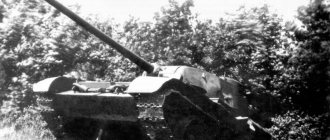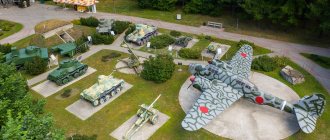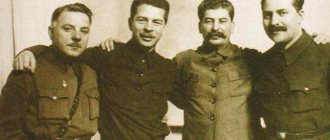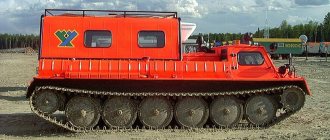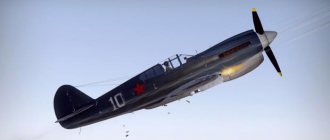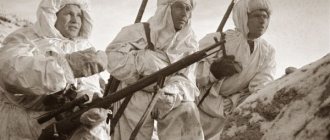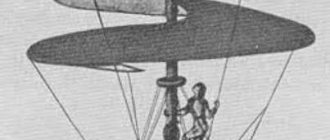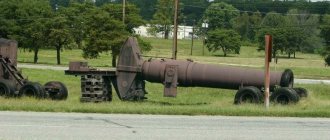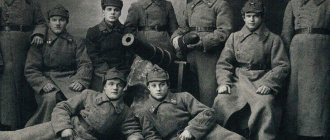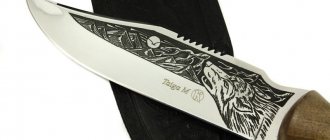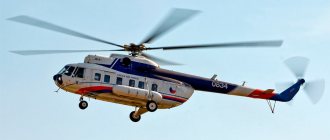The Aviation Handbook, published in 1917, defined helicopters as impractical and unpromising machines. Fortunately, not all designers believed in the futility of such aircraft. In 1940, Igor Sikorsky made the first flight in a single-rotor helicopter not tied to the surface.
In the Soviet Union, one of the designers involved in the theory of “rotor-wing aircraft” was Mikhail Leontyevich Mil. In the pre-war years, he and Nikolai Kamov worked at a factory that assembled gyroplanes, and after the war he began creating a domestic helicopter. It will be Mi-1.
History of creation
Just a year after the end of the Great Patriotic War, Mikhail Mil created a helicopter project. However, at that time this word was not yet generally accepted, and the machine was called EG-1 - “experimental helicopter.” The project was approved, although the designer was recommended to make changes - the state of the aircraft industry at that time did not allow all his bold ideas to be realized.
The next step towards the Mi-1 was the creation of a stand for testing full-size rotors. Finally, in the fall of 1947, a mock-up of EG-1 was built, and the commission fully approved it. Mil was entrusted with the management of the new design bureau, located directly in the workshop of the aircraft plant in Tushino.
The EG-1 project was renamed GM-1 (Mil helicopter), and prototypes began to be created. Moreover, since Mil Design Bureau did not yet have its own production base, the helicopters had to be assembled in Kyiv.
In September 1948, the first sample of the GM-1 took off, and later made a horizontal flight and reached a maximum speed of 170 km/h.
In November, however, while determining the ceiling of the helicopter, the lubricant froze, disabling the swashplate, and the prototype crashed. The second sample was lost in the spring of 1949 - poor-quality welding led to the destruction of the tail rotor transmission shaft.
Corresponding changes were made to the design of the third “helicopter” - the shaft was made solid, and a hard-to-freeze lubricant was selected. At the end of 1949, state tests of the helicopter began, and in 1950, after their successful completion, it was decided to put the aircraft into mass production. At the same time, the name GM-1 was replaced with the familiar Mi-1.
Inside the Mi-26
Similar
Mi-28N Night Hunter Armament. Speed. Engine. Dimensions. Story
Helicopter Mi-24 Speed. Engine. Dimensions. Story. Range of flight
Ka-52 Alligator Armament. Speed. Engine. Dimensions. Story
Helicopter Mi-8 Engines. Dimensions. Weight. Story. Range of flight
Helicopter AH-64 Apache Speed. Engine. Dimensions. Story. Range of flight
Ka-50 Black Shark Armament. Speed. Engine. Dimensions. Story
Helicopter Mi-26 Engines. Dimensions. Load capacity. Story. Range of flight
Helicopter CH-47 Chinook Speed. Engine. Dimensions. Story. Range of flight
Helicopter Mi-2 Speed. Engine. Dimensions. Story. Range of flight
Helicopter Mi-6 Load capacity. Engine. Dimensions. Story. Range of flight
Helicopter Bell UH-1 Iroquois Armament. Speed. Dimensions. Engine
Helicopter Mi-12 Engines. Dimensions. Weight. Story. Load capacity
Helicopter Ka-27 Speed. Engine. Dimensions. Story. Range of flight
Helicopter Ka-62 Engine. Dimensions. Weight. Story. Range of flight
Helicopter Mi-4 Engine. Dimensions. Weight. Story. Range of flight
Helicopter Ka-26 Engine. Dimensions. Weight. Story. Range of flight
Helicopter Ka-226 Engines. Dimensions. Story. Weight. Range of flight
Helicopter Mi-38 Engine. Dimensions. Weight. Story. Range of flight
Helicopter Mi-34 Engines. Dimensions. Weight. Story. Range of flight
Helicopter Mi-14 Speed. Engine. Dimensions. Story. Range of flight
Helicopter Yak-24 Engines. Dimensions. Weight. Story. Load capacity
Helicopter Ka-29 Speed. Engine. Dimensions. Story. Range of flight
Helicopter Mi-1 Engine. Dimensions. Weight. Story. Range of flight
Helicopter Ka-60 Killer whale Speed. Engine. Dimensions. Story. Range of flight
Helicopter Mi-10 Engines. Dimensions. Weight. Story. Load capacity
Helicopter B-7 Speed. Engine. Dimensions. Story. Range of flight
Helicopter AH-1 Cobra Speed. Engine. Dimensions. Story. Range of flight
Helicopter Ka-25 Speed. Engine. Dimensions. Story. Range of flight
Helicopter Ka-118 Engine. Dimensions. Story. Load capacity
Helicopter Ka-10 Engine. Dimensions. Story. Weight. Range of flight
Helicopter Ka-8 Irkutsk Speed. Engine. Dimensions. Story. Range of flight
Helicopter Ka-15 Engine. Dimensions. Story. Range of flight. Static ceiling
Helicopter Ka-22 Engines. Dimensions. Weight. Story. Range of flight
Helicopter Ka-126 Engine. Dimensions. Story. Load capacity
Helicopter Ka-37 Engine. Dimensions. Story. Range of flight
Helicopter Ka-31 Engine. Dimensions. Story. Range of flight. Static ceiling
Helicopter Ka-18 Engine. Dimensions. Story. Weight. Range of flight
You have no rights to post comments
Design
The Mi-1 helicopter is made according to a design that later became most widespread and became classic - with one main rotor and one tail rotor on the tail. The fuselage is a truss welded from steel pipes, covered with duralumin sheets.
The tail boom design is of the “semi-monocoque” type. The bow section is occupied by a cabin with two rows of seats. The front seat is the pilot's seat, behind it there is a small sofa for two passengers. The central part of the fuselage is occupied by a compartment for the engine and transmission.
The AI-26 engine is a gasoline, 7-cylinder, radial.
This engine was created on the basis of the aviation ASh-82, which lacks supercharging and a second row of cylinders. Motor cooling is air, forced. The starter is pneumatic, the fuel supply in the tank installed in the rear fuselage is 240 liters. The engine is mounted horizontally and transmits torque to the propellers using a built-in bevel gear.
Flights of the first Mi-1s showed that cracks began to appear in the gearbox housing, and on production vehicles a torsional vibration damper was introduced into the engine design. The main transmission gearbox is two-stage. The main rotor has three blades, assembled from steel pipe-spars, stringers and wooden ribs. The blades were sheathed with plywood and fabric.
The vibrations of the blades were damped by friction dampers. The horizontal and vertical hinges of the propeller hub on the Mi-1 are spaced apart. The tail rotor was also three-bladed; its blades were made of wood.
The Mi-1 control system is a cable system with virtually no backlash. On the first samples, the engine gas and propeller pitch were controlled separately. A “step-throttle” handle was introduced on production cars. The helicopter was equipped with a non-retractable three-post wheeled landing gear, plus a support to protect the tail boom from impacts. The chassis only had parking brakes.
The first decision is the most correct one
Taking advantage of Khrushchev's interest in helicopters, Mil convinced both customers and the State Planning Committee of the need for two engines. This was no longer a modification of the Mi-4, but a completely new product, expensive but effective. Khrushchev, having visited the USA, saw “their” government helicopters and was inspired by the idea of such a machine, and one engine did not provide sufficient reliability - and on May 30, 1960, a decree was issued on the B-8A helicopter with two light and economical gas turbine engines of 1250 hp each. . development of the Leningrad KB-117 S.P. Izotov. At first, a competitive development was planned, but, oddly enough, there were no more people willing to take on this order. The same team also made the new gearbox. During the design, while maintaining the specified weight of 300 kg and length of 3 m, it was possible to increase the power to 1500 hp. on takeoff. This guaranteed landing at a remote site at any flight weight on one engine.
The B-8A helicopter with two gas turbine engines entered testing in a passenger version. The first hover on it was carried out on August 2, 1962. In March 1963, the vehicle was transferred to State tests, in which both civilian pilots and military personnel from the Air Force Research Institute took part.
Serial army transport helicopter Mi-8T of the first series without weapons Photo: O. Yakubovsky
Despite the overall success of the tests, various modifications, sometimes quite serious, were constantly made to the helicopter’s design.
Firstly, a “quiet” five-blade main rotor with a reduced vibration level appeared. We resolved the issue of synchronizing the rotation of motor shafts and stabilizing the NV frequency within specified limits. An emergency mode was introduced to briefly increase the power of one engine when the second one failed. The AP-34 autopilot was unified with the Mi-4 and Mi-6. The vibration of the helicopter at the moment of takeoff and touch (“ground resonance”) was eliminated by installing two-chamber liquid-gas landing gear shock struts instead of primitive single-chamber ones. The wheels of the main supports are enclosed in fairings. True, the “bast shoes” were not in demand in the series. Soon the B-8A was transferred for endurance testing, and then again for flight testing, but in 1966 the car died in a crash due to the destruction of the tail rotor hub.
In the summer of 1963, the third vehicle, the V-8AT, entered testing. This was the first helicopter for the Air Force. Behind the large rectangular windows of the passenger version there was a cabin for 20...24 paratroopers, and in the bow there was a nest for an A-12.7 machine gun, which was empty for now. “Car” doors were replaced with sliding ones, which was later adopted for the civilian version. The rest of the car was similar to the B-8A. After short factory tests, the V-8AT passed into the hands of the military.
The experimental V-8AP No. 4 was supplied with a government cabin, which contained chairs for the “main passenger” and assistant assistant, separated by a mahogany table from the “guest” chair, as well as armchairs and a side sofa for accompanying persons. The car had new communication and household equipment. It was on the V-8AP that stage “B” of State Tests began in September: confirmation of the declared characteristics by the Customer’s testers. A month later, the same process began on the third machine. In the spring of 1965, the V-8AP was once again radically redesigned. A regular passenger cabin with 28 seats was installed on it. This arrangement later became the basis for the serial version for the MGA.
The fifth experimental helicopter became the standard for the series. In 1965, a positive conclusion based on the results of State tests was issued for the passenger, and then for the transport and landing versions.
Exploitation
Initially, the Mi-1 was conceived as a military communications (or civilian postal) vehicle. However, in order to saturate signalmen (and small aircraft) with such helicopters, it was necessary to begin their mass production, and in 1950 it was possible to assemble only a pre-production batch of 15 copies.
Mil Design Bureau still did not have its own plant, and it was not possible to organize mass production at other enterprises.
There was a lack of confidence in new aircraft.
The attitude of officials towards helicopters changed dramatically only after the Korean War demonstrated the effectiveness of using helicopters in combat conditions. From that moment on, the Mi-1 began to be produced in increasing volumes, and the Mil Design Bureau received Moscow aircraft plant No. 3 at its own disposal.
In 1954, in connection with the decision to increase the production of larger Mi-4 aircraft, production of the Mi-1 began to be transferred to Poland. There, production of the Mi-1 continued until 1965.
The Mi-1 was used by the troops not only as a liaison aircraft, but also as a training aircraft. Civilian samples carried mail, participated in agricultural work, and worked to support expeditions.
There is information that, at least in Odessa, the Mi-1 was used as an air taxi. From the second half of the 60s, they began to be replaced by the more advanced Mi-2 with gas turbine engines. However, the Mi-1 was officially decommissioned only in 1983.
Mi-1 helicopters were supplied to ATS countries.
Among the European countries not included in the socialist camp, Finland and Albania were operators of Mil machines. Helicopters were exported to Asia (China, Mongolia, North Korea) and Arab countries (Syria, Algeria, Egypt). Currently, flying examples of the Mi-1 remain only in museums and private collections.
From the glider...
In the biography of Mikhail Mil, as happens with celebrities, many legends have appeared over time. One of them says that he inherited his unusual surname from his cantonist grandfather, who was let down by his ignorance of the Russian language. When in the middle of the 19th century the boy Samuil was kidnapped from a Jewish town in Lithuania and sold to cantonists - students of a soldier's school - out of fear he was able to clearly pronounce only the word "mil", that is, "mill", they say, I work at a mill. Who knew that a century later this word would become a symbol of the technological power of one of the two superpowers!
Having served his required quarter of a century as a musician in the Baltic Fleet, Samuil Mil exercised the right to choose his place of settlement and settled in Irkutsk. It was here that on November 22 (9th Old Style), 1909, the boy Misha was born into the family of a railway employee Leonty and a hairdresser Maria. Having inherited from his grandfather a talent for music and an excellent ear for foreign languages, he could become a translator or musician. Or an artist: until the very end of his life, Mikhail Mil painted excellently, decorating the corridors of his design bureau with some of his own paintings. But it was the twenties of the 20th century, “bookcase” airplanes were hovering clumsily in the air, and Mikhail became interested in aviation.
Misha Mil gained his first experience in creating aircraft by gluing together airplane models. Perseverance and diligence, as well as, apparently, the talent of the future aircraft designer, were enough for one of these models to win a prize at an aircraft model competition in Tomsk. As another family legend says, this is what prompted the boy to choose aviation as his career path. In 1925, a graduate of a commercial school, Mikhail Mil, refused to work in trade and entered the Siberian Technological Institute - the only one located nearby that offered the then-rare specialty of an aircraft engineer. Mil's classmates turned out to be guys who were passionate about the sky and organized a gliding club at the institute. It was this that became the first design bureau of the future creator of helicopters: in it, Mikhail Mil managed to build a single-seat glider and even take it into the air.
Modifications
On the 1955 Mi-1T model, the AI-26 engine was boosted to 575 hp, an anti-icing system was installed not only for the main rotor, but also for the tail rotor, and the service life of the main components was increased to 300 hours. Based on this model, the Mi-1TU trainer and Mi-1TKR reconnaissance spotter were developed. In 1956, the design of the main rotor blade spars changed - instead of a composite pipe, a solid one was used.
On the Mi-1A, which appeared in 1957, the service life increased from 300 to 1000 hours, spring trimmers were replaced with electromechanical ones, and the flight range was increased due to the ability to attach an additional tank. In the same year, a modification of the Mi-1M appeared, with passenger capacity increased to three people, equipped with all-metal blades and hydraulic boosters.
Other models - agricultural, postal and sanitary, distinguished by hanging equipment, were produced under the symbol Mi-1MNH. Mail helicopters were equipped with hanging containers for mail, and ambulance helicopters were equipped with side gondolas for transporting patients.
In Poland, the Mi-1 was assigned its own index - SM-1, and in 1961 the five-seat SM-2, created on its basis, went into production.
Since at that time preparations were already underway for the release of the Mi-2, the SM-2 did not receive much distribution.
Combat helicopters were also developed on the basis of the Mi-1. They tried to arm them with blocks of unguided rockets, machine-gun containers and small-caliber bombs. Only models armed with Malyutka or Phalanx anti-tank missiles were recommended for adoption, but by this time the helicopter was no longer in production.
The anti-submarine helicopter from the “first” did not work out due to the too large mass of weapons and on-board equipment.
Demonstration
On July 9, 1961, the Mi-10 helicopter, the description of which interests many people even today, was demonstrated to the general public for the first time during the celebration of USSR Air Fleet Day. The car was presented to the spectators at the air parade, and the aircraft itself brought the geological group’s house to the stands of the guests, in which they later opened a retail outlet.
On September 23, the crew under the leadership of pilot Zemskov was able to lift a load weighing 15,103 kilograms on the Mi-10 to a height of 2200 meters, which set an absolute world record, which was broken on the same day by another group of pilots.
Specifications and comparison
Traditionally, the Sikorsky S-51 (H-5) helicopter and the British Bristol-171 are called direct analogues of the Mi-1. At the same time, mass production of the Soviet car began when the American one had already been discontinued.
| Mi-1 | H-5 | Type 171 | |
| Take-off weight (normal), tons | 2,1 | 2,1 | 2,5 |
| Passengers, people | 2-3 | 3 | 3 |
| Load capacity, kg | 255 | No data | No data |
| Cruising speed, km/h | 130 | 130 | 169 |
| Practical range, km | 430 | 370 | 531 |
The Mi-1, in its characteristics, was a completely typical representative of the generation of early rotary-wing aircraft. Perhaps it was even one of the best - almost three dozen world records were set on the “first” one, and the last of them were set after the production of the helicopter ceased.
The first “internal” competitor of the Mil helicopter was the Yak-100. This machine, which looks like the American S-51, received positive reviews from test pilots and successfully passed state tests. But after the Mi-1 was recommended for production, work on the Yak-100 stopped, and production was limited to two prototypes.
Later in the USSR, in parallel with the Mil machines, the Ka-18 was produced and operated - a machine with similar characteristics, but built according to a scheme with coaxial propellers and distinguished by the use of fiberglass blades.
With the start of production of new helicopters, they also began to be taken out of service.
The Mi-2 gas turbine engines were 40% more powerful than the AI-26 piston engines, although they were much lighter, and their placement above the fuselage made it possible to free up its entire volume for the cargo-passenger compartment.
The Mi-1 was not the first Soviet helicopter. However, it turned out to be the most successful and suitable for mass production. He played a big role not only in the development of helicopters by Soviet aviation (civil and military), and, in fact, turned the small Mil design bureau into a full-fledged helicopter; in the literal sense, such famous machines as the Mi-8 and Mi-24 would not have existed.
...to the gyroplane
After two years of study, the talented student was suddenly expelled from the institute for “non-proletarian origin.” As another legend says, the reason for such a harsh measure was the denunciation of one of his classmates, who visited a friend’s house and reported to the local branch of the OGPU that the Miles were using soft Viennese chairs. It was impossible to give up heaven, and Mikhail followed the path that many young people with the same “wrong” profile followed both before and after him. He left Tomsk for Novosibirsk, worked for a year as a leather laboratory worker and earned an excellent reference and recommendation from his superiors. After which, as a representative of the working class, he was assigned to the mechanical faculty of the Don Polytechnic Institute in Novocherkassk.
This was one of the few universities at that time that trained aviation specialists. There was even one of two (the second was located in Moscow TsAGI) wind tunnels that existed in the USSR at that time. Moreover, it was built by the students and teachers themselves under the guidance of a former graduate, and then associate professor, Vladimir Levkov, a future designer of hovercraft. So it is possible that a vindictive classmate who did not like the soft chairs actually provided Mikhail with an invaluable service.
In the early 1930s, the Don Polytechnic Institute was one of the leading centers for training aircraft engineers, where outstanding specialists worked and studied. And immediately enrolled in the third year (two years of study in Tomsk were credited to him without question), Mil actively became involved in mastering the profession. Getting ready for summer practice in 1929, he wrote a letter to aircraft designer and fellow Irkutsk resident Nikolai Kamov, who worked at TsAGI, asking him to accept him as a trainee.
He wrote it for a reason: by that time Mil already knew that it was Kamov who was building the first rotary-wing vehicle in the Soviet Union - an autogyro, and wanted to take part in its creation. The senior comrade respected the enthusiasm of the student-compatriot, and Mikhail Mil was included in the design team of the “Red Engineer” gyroplane KASKR-1 (that is, “Kamov-Skrzhevsky, first model”). Having seen the young man in action, Kamov appreciated his abilities and capabilities, and two years later, when Mil was already graduating from college, he sent his recommendation to send him to TsAGI. So, instead of the aircraft plant in Taganrog, where he was initially assigned, Mikhail Mil ended up in Moscow on Radio Street and became involved in the work of the Bureau of Special Designs. The future famous designer began his career as an engineer in the department that was developing the A-7 gyroplane, the first production aircraft of this type in the USSR.
Interesting Facts
- The Mi-1 became the first Soviet production helicopter.
- One Mi-1HX helicopter, made in the “luxury” version, was used by the President of Finland Urho Kekkonen.
- One day, when Stalin was relaxing at his dacha in the mountains near Lake Ritsa (Abkhazia), an Mi-1 landed on a small area next to his house. After such a demonstration, the leader (who had previously doubted the advantages of helicopters) ordered that the designers be given money for further development of these machines.
- Mi-1 starred in the film “Striped Flight”
- Mi-1 starred in the film “The Career of Dima Gorin”, 1961.
- Mi-1 starred in the film “Maxim Perepelitsa”
- Mi-1 starred in the film “Nowhere Man”
"Mi" in military service
The first helicopter in the USSR designed specifically for combat was the Mi-24, the famous helicopter that received the unofficial nickname “Crocodile”. In the 1960s, the idea was popular that the further development of ground forces would be associated with increased air mobility. For this purpose, it was planned to create well-armed transport and combat helicopters. Such a vehicle could not only quickly transport an entire army unit over a considerable distance, but also fight using cannon, machine gun and rocket weapons.
Mi-24PN
Thanks to the personal control of Mikhail Leontievich Mil and extensive unification with existing machines, the new helicopter was ready in the shortest possible time. The first flight of the Mi-24 took place in 1969. The flying fire support vehicle took part in combat operations in Afghanistan and Chechnya, more than 3,000 units were produced and is the second most common attack helicopter in the world.
The next generation of combat helicopters is the Mi-28 “air tank”, which took off in 1982. For the state order, the Milevians fought with the Kamov Design Bureau, which presented the original development - the B-80 rotary-wing attack aircraft, the future Ka-50. As a result, the Air Force received two completely different production helicopters. In 1996, a modified Mi-28N “Night Hunter” was developed, which can fight around the clock.
